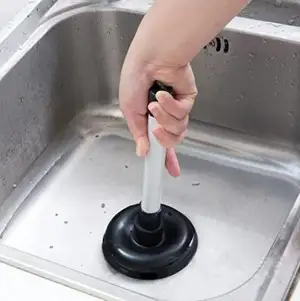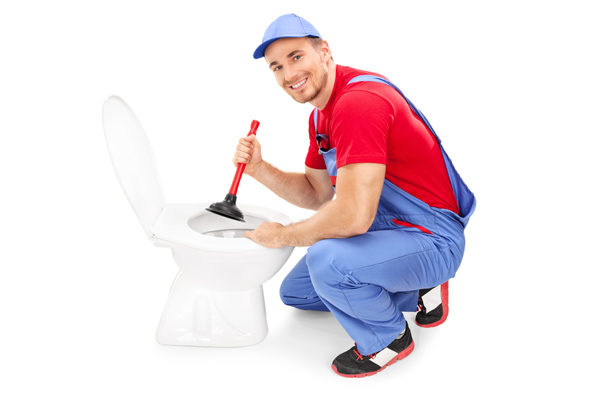How to Effectively Use Plunger and Drain Cleaner: Professional Advice
How to Effectively Use Plunger and Drain Cleaner: Professional Advice
Blog Article
We've found this article pertaining to Here's How to Correctly Use a Toilet Plunger down the page on the web and concluded it made perfect sense to talk about it with you over here.

Introduction
Correct maintenance of family drains is vital for preventing obstructions and making sure smooth water circulation. Among the trick tools in every house owner's toolkit is the bettor, alongside various drain cleaners developed to take on persistent blockages successfully. This short article discovers exactly how to make use of plungers and drainpipe cleaners properly to keep your drains pipes flowing openly.
Section 1: Comprehending Bettors
Types of Plungers
There are a number of sorts of plungers offered, each made for different types of drains and obstructs. One of the most common types include cup bettors, flange bettors, and accordion plungers.
Exactly How Plungers Job
Bettors work on the principle of producing stress and suction to dislodge clogs. When appropriately used over a drainpipe, they develop a vacuum that can pull out debris or break up blockages.
Selecting the Right Plunger
Choosing the ideal bettor depends upon the type of drainpipe and the nature of the clog. Mug bettors are perfect for sinks and tubs, while flange bettors are better suited for toilets due to their design.
Usual Errors with Bettors
Avoiding these errors guarantees effective plunging: incorrect seal around the drainpipe, insufficient pressure, and not clearing bordering particles.
Section 2: Making Use Of Plungers Efficiently
Prep work
Before diving, make sure the bettor covers the drain entirely and develops a limited seal. Clear any noticeable particles around the drain opening.
Strategy
Start with gentle diving motions to build suction. Boost stress progressively, using a consistent rhythm. Repeat as necessary up until the drainpipe removes.
Repairing Tips
If diving doesn't work, attempt readjusting the seal, applying petroleum jelly for a far better seal, or making use of a different kind of bettor.
Area 3: Recognizing Drainpipe Cleaners
Types of Drain Cleansers
Drain cleaners can be chemical or chemical. Chemical cleansers use solid chemicals to liquify obstructions, while chemical cleaners utilize all-natural enzymes to break down raw material.
Just How Drainpipe Cleansers Job
Chemical cleaners respond with blockages to dissolve them, while enzymatic cleaners break down natural materials like hair and oil without harming pipelines.
Safety Factors to consider
Constantly wear handwear covers and eye defense when making use of chemical drain cleansers. Ensure appropriate air flow and follow producer directions carefully.
Eco-Friendly Alternatives
Think about utilizing vinegar and cooking soft drink or enzyme-based cleansers for green alternatives that are more secure for pipelines and the setting.
Area 4: Making Use Of Drainpipe Cleansers Successfully
Application Methods
Pour chemical cleaners straight right into the drain opening. Allow them to work for the advised time prior to flushing with hot water. Chemical cleansers need to sit overnight.
Safety measures
Stay clear of blending different types of cleaners, as this can create hazardous fumes. Never ever make use of chemical cleansers in conjunction with a plunger, as splashing can take place.
Managing Stubborn Blockages
For consistent blockages, consider using a pipes serpent or calling a specialist plumbing to stop damages to pipelines.
Conclusion
Finally, understanding exactly how to use bettors and drain cleansers efficiently is essential for preserving healthy and balanced plumbing systems. By selecting the right devices and techniques, house owners can take on minor obstructions and prevent significant plumbing problems down the line.
How To Properly Use A Plumbing Snake To Clear Drains
When any drain clogs in our home arise, we tend to gravitate toward the plunger and little else. In cases where the plunger and its vacuum-created pressure are not able to clear clogs, many immediately move to harmful chemicals or simply call their plumber to fix the issue.
we’re happy to help with all drain cleaning needs and concerns. This includes informing you on a few other home remedies you may have at your disposal for minor to moderate clogs, one of which is the use of a plumbing snake. Many people have never used one of these before – let’s go over the steps to take when your drain clogs and you have a plumbing snake available.
Attempt Plunger Use
The first step here, as we noted above, should indeed be to grab your plunger when you notice a drain clog and attempt to resolve it this way. If you’re unsure how to use a particular type of plunger, our plumbers can answer any questions you have. If this doesn’t do the trick, however, you move on to the snake.
Locate And Prepare Snake
A plumbing snake is a metal or plastic device that’s generally about a quarter of an inch thick. It’s design with significant extensions, meant to reach down into your clogged drain and push the clog out. Snakes also contain drain augers that will latch onto and push stubborn blockages.
If your plunger doesn’t clear a clog, locate your snake and bring it to the drain in question. We also recommend keeping a bucket nearby to collect the clog once you pull it out, plus we’d advise wearing goggles and possibly protective gloves.
Feed Snake
Once you’re ready to go, feed the snake slowly down the drain, using the crank device it comes with to keep it moving until it finds the clog. Once this happens, much of the clog will be latched onto the coil so you can pull it out, while the rest will simply break up and flow downward.
Detach Debris
Remove the snake slowly from the drain, and once you’ve done so, pick off any debris that’s stuck to the coil. This is another area where wearing gloves is a must.
Flush Drain
Finally, take a few minutes to ensure the snake has done its job correctly. If you’ve been using it on a toilet, flush the toilet a couple times and make sure everything flows well. If you’ve used it on a different drain, flush it with some room temperature water.
https://www.mybuddytheplumber.com/blog/how-to-properly-use-a-plumbing-snake-to-clear-drains/

Application Methods
Pour chemical cleaners straight right into the drain opening. Allow them to work for the advised time prior to flushing with hot water. Chemical cleansers need to sit overnight.
Safety measures
Stay clear of blending different types of cleaners, as this can create hazardous fumes. Never ever make use of chemical cleansers in conjunction with a plunger, as splashing can take place.
Managing Stubborn Blockages
For consistent blockages, consider using a pipes serpent or calling a specialist plumbing to stop damages to pipelines.
Conclusion
Finally, understanding exactly how to use bettors and drain cleansers efficiently is essential for preserving healthy and balanced plumbing systems. By selecting the right devices and techniques, house owners can take on minor obstructions and prevent significant plumbing problems down the line.
How To Properly Use A Plumbing Snake To Clear Drains
When any drain clogs in our home arise, we tend to gravitate toward the plunger and little else. In cases where the plunger and its vacuum-created pressure are not able to clear clogs, many immediately move to harmful chemicals or simply call their plumber to fix the issue.
we’re happy to help with all drain cleaning needs and concerns. This includes informing you on a few other home remedies you may have at your disposal for minor to moderate clogs, one of which is the use of a plumbing snake. Many people have never used one of these before – let’s go over the steps to take when your drain clogs and you have a plumbing snake available.
Attempt Plunger Use
The first step here, as we noted above, should indeed be to grab your plunger when you notice a drain clog and attempt to resolve it this way. If you’re unsure how to use a particular type of plunger, our plumbers can answer any questions you have. If this doesn’t do the trick, however, you move on to the snake.
Locate And Prepare Snake
A plumbing snake is a metal or plastic device that’s generally about a quarter of an inch thick. It’s design with significant extensions, meant to reach down into your clogged drain and push the clog out. Snakes also contain drain augers that will latch onto and push stubborn blockages.
If your plunger doesn’t clear a clog, locate your snake and bring it to the drain in question. We also recommend keeping a bucket nearby to collect the clog once you pull it out, plus we’d advise wearing goggles and possibly protective gloves.
Feed Snake
Once you’re ready to go, feed the snake slowly down the drain, using the crank device it comes with to keep it moving until it finds the clog. Once this happens, much of the clog will be latched onto the coil so you can pull it out, while the rest will simply break up and flow downward.
Detach Debris
Remove the snake slowly from the drain, and once you’ve done so, pick off any debris that’s stuck to the coil. This is another area where wearing gloves is a must.
Flush Drain
Finally, take a few minutes to ensure the snake has done its job correctly. If you’ve been using it on a toilet, flush the toilet a couple times and make sure everything flows well. If you’ve used it on a different drain, flush it with some room temperature water.
https://www.mybuddytheplumber.com/blog/how-to-properly-use-a-plumbing-snake-to-clear-drains/

Do you appreciate reading about A Guide to Plungers (and How to Use Them)? Put a remark down the page. We would be happy to listen to your thinking about this write up. We are looking forward that you come back again later on. If you liked our post please make sure you remember to share it. Thanks for going through it.
Click Here Report this page